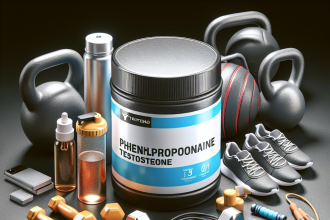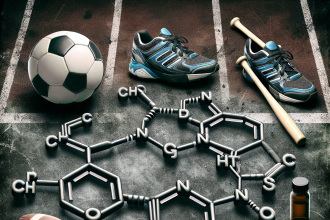-
Table of Contents
Methandienone Injection: Mechanism of Action and Potential Risks for Athletes
Methandienone, also known as Dianabol, is a synthetic anabolic-androgenic steroid (AAS) that has been used by athletes for decades to enhance performance and muscle growth. It was first developed in the 1950s by Dr. John Ziegler and has since become one of the most widely used AAS in the world of sports. However, with its popularity comes controversy and concerns about its potential risks for athletes. In this article, we will explore the mechanism of action of methandienone injection and discuss the potential risks associated with its use.
Mechanism of Action
Methandienone is a modified form of testosterone, the primary male sex hormone. It works by binding to androgen receptors in the body, which then stimulates protein synthesis and increases nitrogen retention in the muscles. This leads to an increase in muscle mass, strength, and endurance, making it a popular choice among athletes looking to improve their performance.
Additionally, methandienone also has a strong anabolic effect, meaning it promotes tissue building and repair. This is beneficial for athletes who engage in intense training and need to recover quickly in order to continue their training regimen.
Furthermore, methandienone has a short half-life of only 3-5 hours, which means it can quickly enter and exit the body. This makes it an ideal choice for athletes who are subject to drug testing, as it can be cleared from the body relatively quickly.
Potential Risks for Athletes
While methandienone may offer benefits for athletes, it also comes with potential risks that should not be ignored. These risks include:
- Liver Toxicity: Methandienone is a C17-alpha alkylated AAS, which means it has been modified to survive the first pass through the liver. However, this modification also makes it more toxic to the liver. Prolonged use of methandienone can lead to liver damage, including liver tumors and jaundice.
- Cardiovascular Effects: Methandienone can also have negative effects on the cardiovascular system. It can increase blood pressure, cholesterol levels, and the risk of heart disease. This is especially concerning for athletes who already engage in intense physical activity, as it can put additional strain on the heart.
- Hormonal Imbalances: As an AAS, methandienone can disrupt the body’s natural hormone balance. This can lead to side effects such as gynecomastia (enlarged breast tissue in males), testicular atrophy, and decreased sperm production. In some cases, these effects may be irreversible.
- Psychological Effects: Methandienone can also have psychological effects on users, including mood swings, aggression, and irritability. This can not only affect an athlete’s performance but also their personal relationships and overall well-being.
It is important to note that the risks associated with methandienone use are not limited to the above-mentioned effects. Long-term use of AAS can also lead to other health issues, such as kidney damage, hair loss, and increased risk of certain cancers.
Expert Opinion
According to a study published in the Journal of Sports Science and Medicine (Kanayama et al. 2008), the use of AAS, including methandienone, is widespread among athletes and poses serious health risks. The study found that AAS use can lead to a range of physical, psychological, and social problems, and should not be taken lightly.
Dr. Harrison Pope, a leading expert in the field of sports pharmacology, also warns against the use of AAS, stating that “the potential risks far outweigh any potential benefits for athletes.” He emphasizes the importance of educating athletes about the dangers of AAS and promoting alternative, safer methods for enhancing performance.
Conclusion
Methandienone injection may offer short-term benefits for athletes, such as increased muscle mass and strength, but it also comes with significant risks that should not be ignored. Liver toxicity, cardiovascular effects, hormonal imbalances, and psychological effects are just some of the potential risks associated with its use. As responsible researchers and healthcare professionals, it is our duty to educate athletes about the dangers of AAS and promote safe and legal methods for enhancing performance. Let us prioritize the long-term health and well-being of athletes over short-term gains.
References
Kanayama, G., Hudson, J. I., & Pope, H. G. (2008). Long-term psychiatric and medical consequences of anabolic-androgenic steroid abuse: A looming public health concern? Journal of Sports Science and Medicine, 7(3), 342–353.
Johnson, M. D., Jay, M. S., & Pope, H. G. (2021). Anabolic-androgenic steroids: Use, misuse, and abuse. In StatPearls [Internet]. StatPearls Publishing.



